Berg J.M., Tymoczko J.L., Stryer L. Biochemistry
Подождите немного. Документ загружается.


20.
Highly abundant amino acid residues have the most codons (e.g., Leu and Ser each have six), whereas the least-
abundant amino acids have the fewest (Met and Trp each have only one). Degeneracy (a) allows variation in base
composition and (b) decreases the likelihood that a substitution for a base will change the encoded amino acid. If
the degeneracy were equally distributed, each of the 20 amino acids would have three codons. Both benefits (a and
b) are maximized by the assignment of more codons to prevalent amino acids than to less frequently used ones.
See question
21.
Phe-Cys-His-Val-Ala-Ala.
See question
22.
Hydrogen cyanide. Adenine can be viewed as a pentamer of HCN.
See question
23.
(a) A codon for lysine cannot be changed to one for aspartate by the mutation of a single nucleotide.
(b) Arg, Asn, Gln, Glu, Ile, Met, or Thr.
See question
24.
The genetic code is degenerate. Of the 20 amino acids, 18 are specified by more than one codon. Hence, many
nucleotide changes (especially in the third base of a codon) do not alter the nature of the encoded amino acid.
Mutations leading to an altered amino acid are usually more deleterious than those that do not and hence are subject
to more stringent selection.
See question
Answers to Problems
Chapter 12
1.
2.86 × 10
6
molecules, because each leaflet of the bilayer contains 1.43 × 10
6
molecules.
See question
2.
2 × 10
-7
cm, 6 × 10
-6
cm, and 2 × 10
-4
cm.
See question
3.
The radius of this molecule is 3.1 × 10
-7
cm, and its diffusion coefficient is 7.4 × 10
-9
cm
2
s
-1
. The average distances
traversed are 1.7 × 10
-7
cm in 1 µs, 5.4 × 10
-6
in 1 ms, and 1.7 × 10
-4
cm in 1 s.
See question
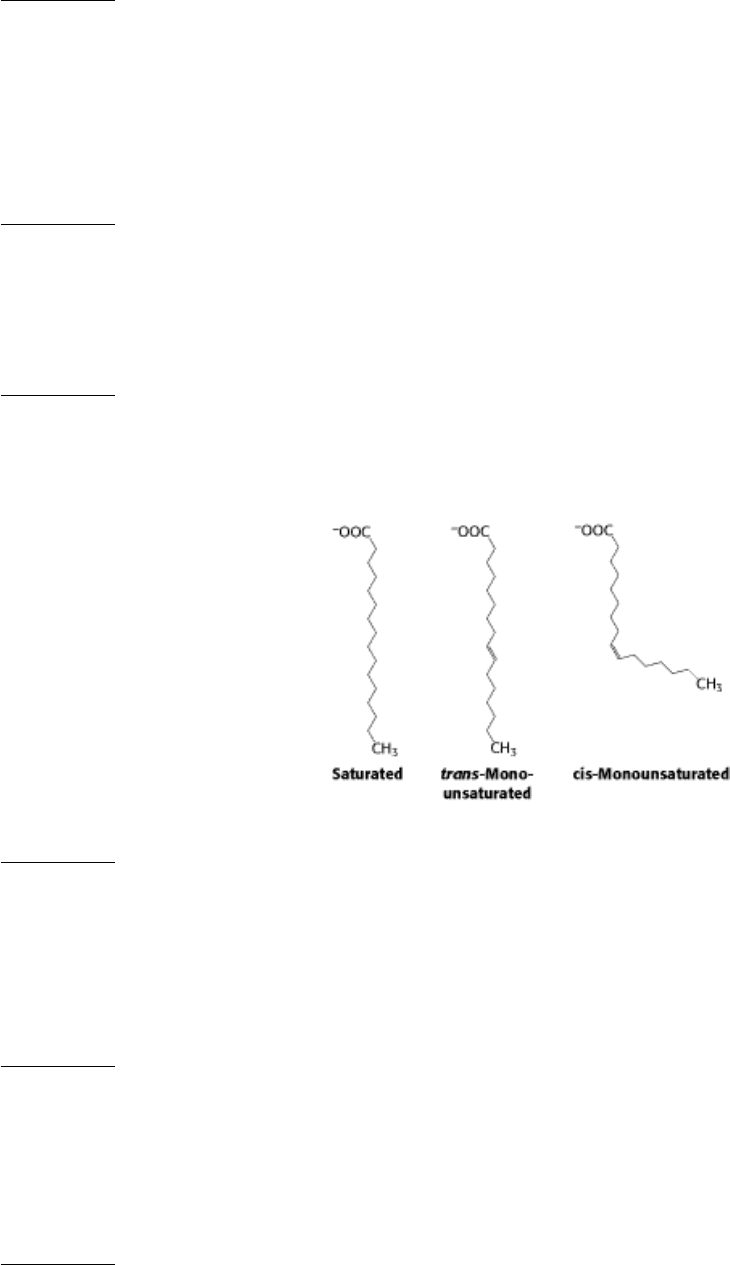
4.
The membrane underwent a phase transition from a highly fluid to a nearly frozen state when the temperature was
lowered. A carrier can shuttle ions across a membrane only when the bilayer is highly fluid. A channel former, in
contrast, allows ions to traverse its pore even when the bilayer is quite rigid.
See question
5.
The initial decrease in the amplitude of the paramagnetic resonance spectrum results from the reduction of
spinlabeled phosphatidyl choline molecules in the outer leaflet of the bilayer. Ascorbate does not traverse the
membrane under these experimental conditions; hence, it does not reduce the phospholipids in the inner leaflet. The
slow decay of the residual spectrum is due to the reduction of phospholipids that have flipped over to the outer
leaflet of the bilayer.
See question
6.
The addition of the carbohydrate introduces a significant energy barrier to the flip-flop because a hydrophilic
carbohydrate moiety would need to be moved through a hydrophobic environment. This energetic barrier enhances
membrane asymmetry.
See question
7.
The presence of a cis double bond introduces a kink that prevents packing of the fatty acid chains. Cis double bonds
maintain fluidity. Trans fatty acids have no structural effect, relative to saturated fatty acids, and so they are rare.
See question
8.
In a hydrophobic environment, the formation of intrachain hydrogen bonds would stabilize the amide hydrogen atom
and carbonyl oxygen atoms of the polypeptide chain; so an α helix would form. In an aqueous environment, these
groups would be stabilized by interaction with water, so there would be no energetic reason to form an α helix.
Thus, the α helix would be most likely to form in an hydrophobic environment.
See question
9.
The shift to the lower temperature would decrease fluidity by enhancing packing of the hydrophobic chains by van
der Waals interaction. To prevent this, new phospholipids would be synthesized having shorter chains and a greater
number of cis double bonds. The shorter chains would reduce the amount of van der Waals interaction, and the cis
double bonds, causing the kink in structure, would prevent packing of the fatty acid tails of the phospholipids.
See question

10.
(a) The graph shows that, as temperature increases, the phospholipid bilayer becomes more fluid. T
m
is the
temperature of the transition from the predominantly less fluid state to the predominantly more fluid state.
Cholesterol broadens the transition from the less-fluid to the more-fluid state. In essence, cholesterol makes
membrane fluidity less sensitive to temperature changes.
(b) This effect is important because the presence of cholesterol tends to stabilize membrane fluidity by preventing
sharp transitions. Because protein function depends on the proper fluidity of the membrane, cholesterol maintains
the proper environment for membrane-protein function.
See question
11.
Protein C is a transmembrane protein from C. elegans. It spans the membrane with four α helices that are
prominently displayed as hydrophobic peaks in the hydropathy plot. Interestingly, protein A also is a membrane
protein, a porin. This protein is made primarily of β strands, which lack the prominent hydrophobic window of
membrane helices. This example shows that, although hydropathy plots are useful, they are not infallible.
See question
12.
To purify any protein, the protein must first be solubilized. For a membrane protein, solubilization usually requires
a detergent hydrophobic molecules that bind to the protein and thus replace the lipid environment of the
membrane. If the detergent is removed, the protein aggregates and precipitates from solution. Often, performing
purification steps, such as ion-exchange chromatography, in the presence of sufficient detergent to solubilize the
protein is difficult. Crystals must be generated of appropriate protein-detergent complexes.
See question
Answers to Problems
Chapter 14
1.
Reactions in parts a and c, to the left; reactions in parts b and d, to the right.
See question
2.
None whatsoever.
See question
3.
(a) ∆ G°
= +7.5 kcal mol
-1
(+31.4 kJ mol
-1
) and K
eq
= 3.2 × 10
-6
. (b) 3.28 × 10
4
.
See question
4.
∆ G°
= -1.7 kcal mol
-1
(-7.1 kJ mol
-1
). The equilibrium ratio is 17.8.
See question
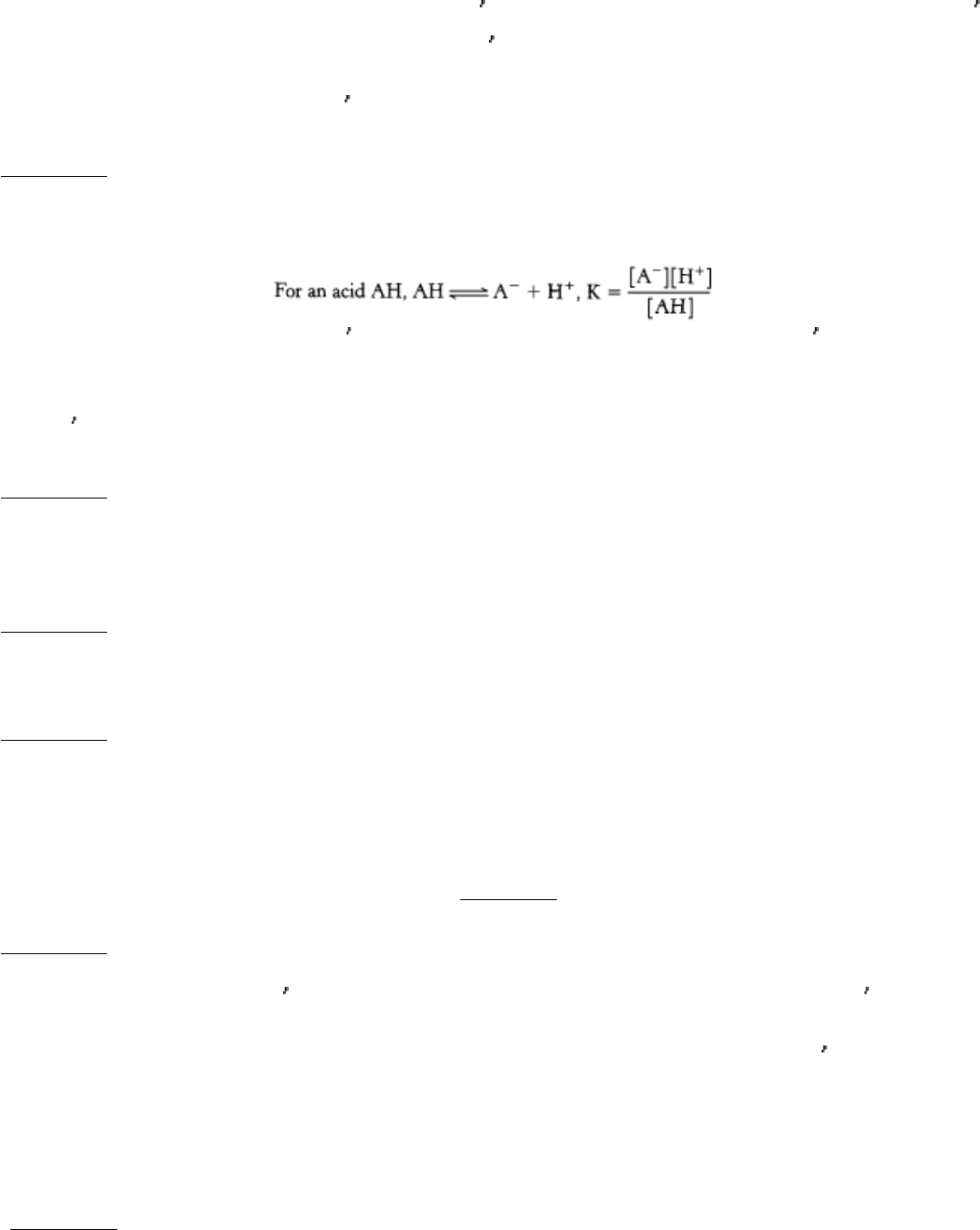
5.
(a) Acetate + CoA + H
+
goes to acetyl CoA + H
2
O, ∆ G° = +7.5 kcal mol
-1
(+31.4 kJ mol
-1
). ATP hydrolysis, ∆ G°
= -10.9 kcal mol
-1
(-45.6 kJ mol
-1
). Overall reaction, ∆ G° = -3.4 kcal mol
-1
(-14.2 kJ mol
-1
).
(b) With pyrophosphate hydrolysis, ∆ G°
= -8.0 kcal mol
-1
(-33.4 kJ mol
-1
).
See question
6.
(a)
The pK is defined as pK = -log
10
K. ∆ G° is the standard free energy change at pH 7. Thus, ∆ G° = -RT ln K = -
2.303 log
10
K = -2.303 (pK - 7) kcal mol
-1
since [H
+
] = 10
-7
M.
(b) ∆ G°
= -2.303 (4.8 - 7) = -5.1 kcal mol
-1
(-21.3 kJ mol
-1
).
See question
7.
Arginine phosphate in invertebrate muscle, like creatine phosphate in vertebrate muscle, serves as a reservoir of high-
potential phosphoryl groups. Arginine phosphate maintains a high level of ATP in muscular exertion.
See question
8.
An ADP unit.
See question
9.
(a) The rationale behind creatine supplementation is that it would be converted into creatine phosphate and thus
serves as a rapid means of replenishing ATP after muscle contraction.
(b) If it is beneficial, it would affect activities that depend on short bursts of activity; any sustained activity would
require ATP generation by fuel metabolism, which, as Figure 14.7 shows, requires more time.
See question
10.
Under standard conditions, ∆ G° = -RT ln [product]/[reactants]. Substituting +5.7 kcal mol
-1
for ∆ G° and solving
for [products]/[reactants] yields 7 × 10
-5
. In other words, the forward reaction does not take place to a significant
extent. Under intracellular conditions, ∆ G is 0.3 kcal mol
-1
. If one uses the equation ∆ G = ∆ G° + RT ln
[product]/ [reactants] and solves for [products]/[reactants], the ratio is 3.7 × 10
-5
. Thus, a reaction that is endergonic
under standard conditions can be converted into an exergonic reaction by maintaining the [products]/[reactants]
ratio below the equilibrium value. This conversion is usually attained by using the products in another coupled
reaction as soon as they are formed.
See question
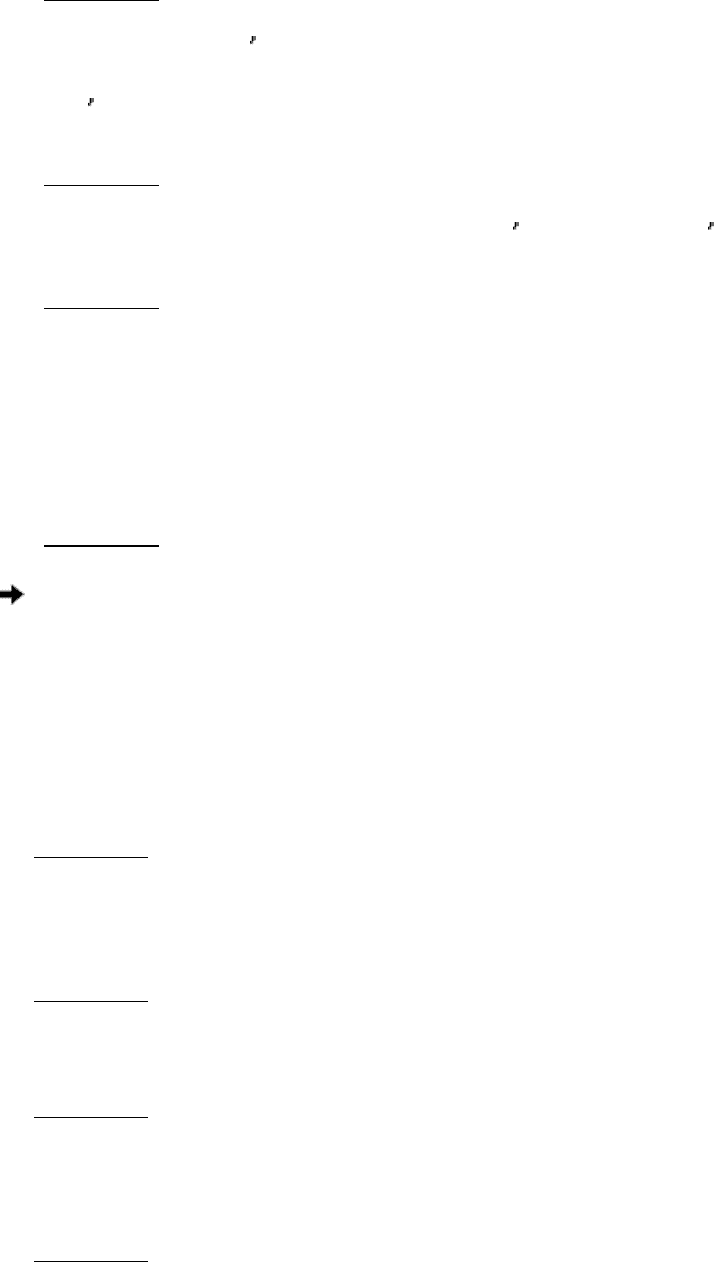
11.
Liver: -10.8 kcal mol
-1
(-45.2 kJ mol
-1
); muscle: -11.5 kcal mol
-1
(-47.8 kJ mol
-1
); brain: -11.6 kcal mol
-1
(-48.4 kJ
mol
-1
).
See question
12.
Recall that ∆ G = ∆ G°
+ RT ln [products/reactants]. Altering the ratio of products to reactants will cause ∆ G to
vary. In glycolysis, the concentrations of the components of the pathway result in a value of ∆ G greater than that of
∆ G°
.
See question
13.
The activated form of sulfate in most organisms is 3
-phosphoadenosine 5 -phosphosulfate.
See question
14.
(a) As the Mg
2+
concentration falls, the ∆ G of hydrolysis rises. Note that pMg is a logarithmic plot, and so each
number on the x-axis represents a 10-fold change in [Mg
2+
].
(b) Mg
2+
would bind to the phosphates of ATP and help to mitigate charge repulsion. As the [Mg
2+
] falls, charge
stabilization of ATP would be less, leading to greater charge repulsion and an increase in ∆ G on hydrolysis.
See question
Answers to Problems
Chapter 15
1.
Each activated β-adrenergic receptor activates many G proteins. Each G protein activates one molecule of adenylate
cyclase, which generates many molecules of cAMP. Each activated human growth-factor receptor can activate more
than one molecule of JAK2. Each JAK2 molecule can phosphorylate many STAT5 molecules. Each activated EGF
receptor can activate Grb-2 and Sos. Each molecule of Sos can activate many molecules of Ras.
See question
2.
The negatively charged glutamate residues mimic the negatively charged phosphoserine or phosphothreonine
residues and stabilize the active conformation of the enzyme.
See question
3.
No. Phosphoserine and phosphothreonine are considerably shorter than phosphotyrosine.
See question
4.
Removal of the regulatory subunit from PKA with the binding of cAMP. Removal of the pseudosubstrate from PKC
by diacylglycerol binding. Removal of the amphipathic helix from the active site of CaM kinase by calmodulin.
See question

5.
The mutant should always be active because the pseudosubstrate will not bind in the active site.
See question
6.
Growth-factor receptors can be activated by dimerization. If an antibody causes a receptor to dimerize, the signal-
transduction pathway in a cell will be activated.
See question
7.
The α subunit will always be in the GTP form and, hence, should always be in the active form, stimulating its
signaling pathway.
See question
8.
The mutated hormone would bind to the growth-hormone receptor but would not favor receptor dimerization. Thus,
it would not stimulate the JAK-STAT signaling pathway. Such a mutated hormone might be useful as a competitive
inhibitor for growth hormone. It would block the activity of native growth hormone.
See question
9.
Calcium ions diffuse slowly because they bind to many protein surfaces within a cell, impeding their free motion.
cAMP does not bind as frequently, and so it diffuses more rapidly.
See question
10.
G
α
s
stimulates adenylate cyclase, leading to the generation of cAMP. This signal then leads to glucose
mobilization (see Chapter 21). If cAMP phosphodiesterase were inhibited, then cAMP levels would remain high
even after the termination of the epinephrine signal, and glucose mobilization would continue.
See question
11.
The formation of diacylglycerol implies the participation of phospholipase C. A simple pathway would entail
receptor activation by cross-phosphorylation, followed by the binding of phospholipase C γ (through its SH2
domains). The participation of phospholipase C indicates that IP
3
should be formed and, hence, calcium
concentrations should increase.
See question
12.
In the reaction catalyzed by adenylate cyclase, the 3 -OH group nucleophilically attacks the α-phosphorus atom
attached to the 5
-OH group, leading to displacement of pyrophosphate. The reaction catalyzed by DNA
polymerase is similar except that the 3
-OH group is on a different nucleotide.
See question
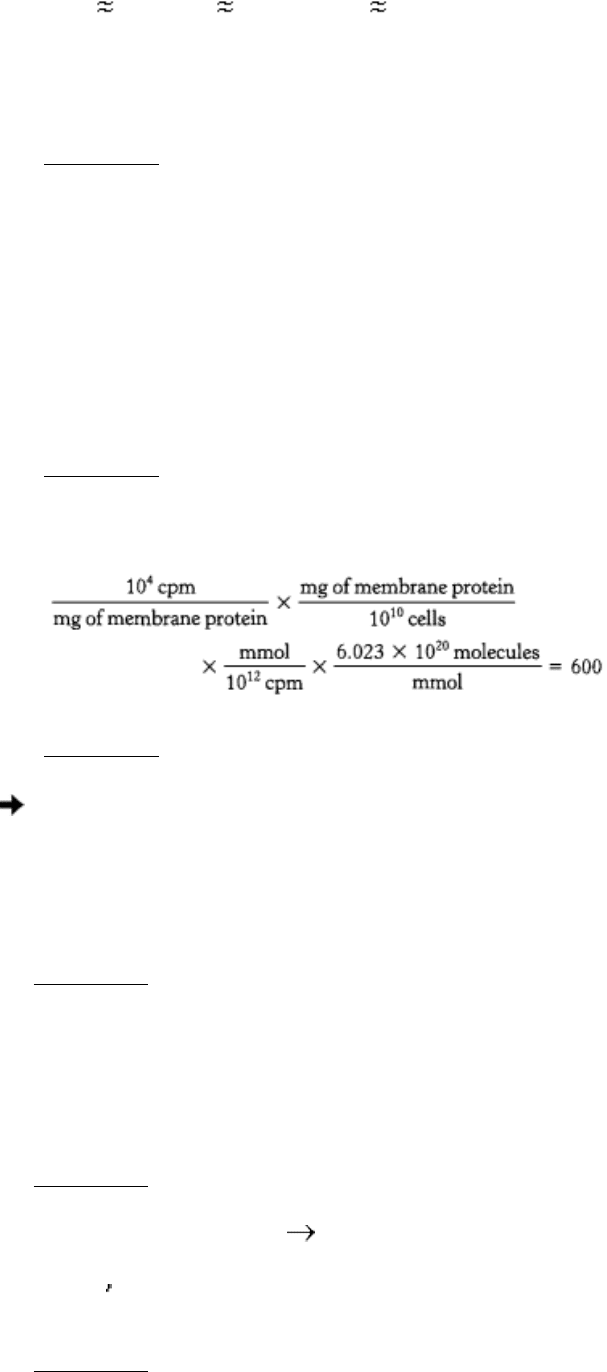
13.
(a) X
10
-7
M; Y 5 × 10
-6
M; Z 10
-3
M. (b) Because much less X is required to fill half of the sites, X
displays the highest affinity. (c) The binding affinity almost perfectly matches the ability to stimulate adenylate
cyclase, suggesting that the hormone-receptor complex leads to the stimulation of adenylate cyclase. (d) Try
performing the experiment in the presence of antibodies to G
α
s
.
See question
14.
(a) The total binding does not distinguish between binding to a specific receptor, binding to different receptors, and
nonspecific binding to the membrane.
(b) The rationale is that the receptor will have a high affinity for the ligand. Thus, in the presence of excess
nonradioactive ligand, the receptor will bind to nonradioactive ligand. Therefore, any binding of the radioactive
ligand must be nonspecific.
(c) The plateau suggests that the number of receptor-binding sites in the cell membrane is limited.
See question
15.
Number of receptors per cell =
See question
Answers to Problems
Chapter 16
1.
Glucose is reactive because its open-chain form contains an aldehyde group.
See question
2.
(a) The label is in the methyl carbon atom of pyruvate.
(b) 5 mCi/mM. The specific activity is halved because the number of moles of product (pyruvate) is twice that of the
labeled substrate (glucose).
See question
3.
(a) Glucose + 2 P
i
+ 2 ADP 2 lactate + 2 ATP
(b) ∆ G
= -27.2 kcal mol
-1
(-114 kJ mol
-1
).
See question

4.
3.06 × 10
-5
.
See
question
5.
The equilibrium concentrations of fructose 1,6-bisphosphate, dihydroxyacetone phosphate, and glyceraldehyde 3-
phosphate are 7.8 × 10
-4
M, 2.2 × 10
-4
M, and 2.2 × 10
-4
M, respectively.
See question
6.
All three carbon atoms of 2,3-BPG are
14
C labeled. The phosphorus atom attached to the C-2 hydroxyl group is
32
P
labeled.
See question
7.
Hexokinase has a low ATPase activity in the absence of a sugar because it is in a catalytically inactive conformation.
The addition of xylose closes the cleft between the two lobes of the enzyme. However, xylose lacks a hydroxy-
methyl group, and so it cannot be phosphorylated. Instead, a water molecule at the site normally occupied by the C-6
hydroxymethyl group acts as the acceptor of the phosphoryl group from ATP.
See question
8.
(a) The fructose 1-phosphate pathway forms glyceraldehyde 3-phosphate.
(b) Phosphofructokinase, a key control enzyme, is bypassed. Furthermore, fructose 1-phosphate stimulates pyruvate
kinase.
See question
9.
(a) Increased; (b) increased; (c) increased; (d) decreased.
See question
10.
Fructose 2,6-bisphosphate, present at high concentration when glucose is abundant, normally inhibits
gluconeogenesis by blocking fructose 1,6-bisphosphatase. In this genetic disorder, the phosphatase is active
irrespective of the glucose level. Hence, substrate cycling is increased. The level of fructose 1,6-bisphosphate is
consequently lower than normal. Less pyruvate is formed and thus less ATP is generated.
See question
11.
Reactions in parts b and e would be blocked.
See question
12.
There will be no labeled carbons. The CO
2
added to pyruvate (formed from the lactate) to form oxaloacetate is lost
with the conversion of oxaloacetate into phosphoenolpyruvate.
See question
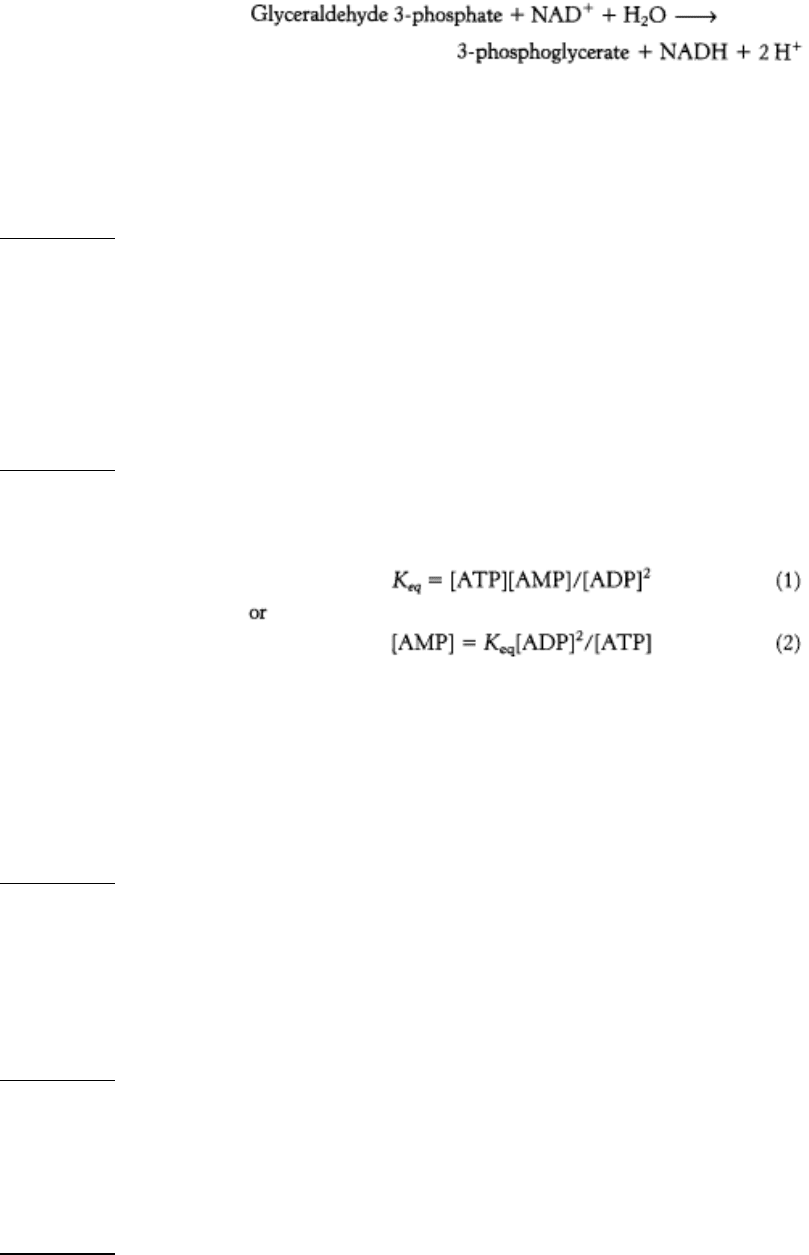
13.
The net reaction in the presence of arsenate is
Glycolysis proceeds in the presence of arsenate, but the ATP normally formed in the conversion of 1,3-
bisphosphoglycerate into 3-phosphoglycerate is lost. Thus, arsenate uncouples oxidation and phosphorylation by
forming a highly labile acyl arsenate.
See question
14.
This example illustrates the difference between stoichio-metric and catalytic utilization of a molecule. If cells used
NAD
+
stoichiometrically, a new molecule of NAD
+
would be required each time a lactate is produced. As we will
see, the synthesis of NAD
+
requires ATP. On the other hand, if the NAD
+
that is converted into NADH could be
recycled and reused, a small amount of the molecule could regenerate a vast amount of lactate. This is the case in
the cell. NAD
+
is regenerated by the oxidation of NADH and reused. NAD
+
is thus used catalytically.
See question
15.
Consider the equilibrium equation of adenylate kinase.
Recall that [ATP] > [ADP] > [AMP] in the cell. As ATP is utilized, a small decrease in its concentration will result
in a larger percentage increase in [ADP] because its concentration is greater than that of ADP. This larger
percentage increase in [ADP] will result in an even greater percentage increase in [AMP] because its concentration
is related to the square of [ADP]. In essence, equation 2 shows that monitoring the energy status with AMP
magnifies small changes in [ATP], leading to tighter control.
See question
16.
The synthesis of glucose during intense exercise provides a good example of interorgan cooperation in higher
organisms. When muscle is actively contracting, lactate is produced from glucose by glycolysis. The lactate is
released into the blood and absorbed by the liver, where it is converted by gluconeogenesis into glucose. The newly
synthesized glucose is then released and taken up by the muscle for energy generation.
See question
17.
The input of four additional high-phosphoryl-transfer potential molecules in gluconeogenesis changes the
equilibrium constant by a factor of 10
32
, which makes the conversion of pyruvate into glucose thermodynamically
feasible. Without this energetic input, gluconeogenesis would not take place.
See question

18.
The mechanism is analogous to that for triose phosphate isomerase (Figure 16.6). It proceeds through an enediol
intermediate. The active site would be expected to have a general base (analogous to Glu 165 in TIM) and a general
acid (analogous to His 95 in TIM).
See question
19.
Galactose is a component of glycoproteins. Possibly, the absence of galactose leads to the improper formation or
function of glycoproteins required in the central nervous system. More generally, the fact that the symptoms arise
in the absence of galactose suggests that galactose is required in some fashion.
See question
20.
(a) Curiously, the enzyme uses ADP as the phosphoryl donor rather than ATP.
(b) Both AMP and ATP behave as competitive inhibitors of ADP, the phosphoryl donor. Apparently, the P.
furiosus enzyme is not allosterically inhibited by ATP.
See question
Answers to Problems
Chapter 17
1.
(a) After one round of the citric acid cycle, the label emerges in C-2 and C-3 of oxaloacetate. (b) The label emerges
in CO
2
in the formation of acetyl CoA from pyruvate. (c) After one round of the citric acid cycle, the label emerges
in C-1 and C-4 of oxaloacetate. (d and e) Same fate as that in part a.
See question
2.
(a) Isocitrate lyase and malate synthase are required in addition to the enzymes of the citric acid cycle.
(b) 2 Acetyl CoA + 2 NAD
+
+ FAD + 3 H
2
O oxaloacetate + 2 CoA + 2 NADH + FADH
2
+ 3 H
+
(c) No. Hence, mammals cannot carry out the net synthesis of oxaloacetate from acetyl CoA.
See question
3.
-9.8 kcal mol
-1
(-41.0 kJ mol
-1
).
See question
4.
Enzymes or enzyme complexes are biological catalysts. Recall that a catalyst facilitates a chemical reaction without
the catalyst itself being permanently altered. Oxaloacetate can be thought of as a catalyst because it binds to an
acetyl group, leads to the oxidative decarboxylation of the two carbon atoms, and is regenerated at the completion of
a cycle. In essence, oxaloacetate (and any cycle intermediate) acts as a catalyst.
See question
